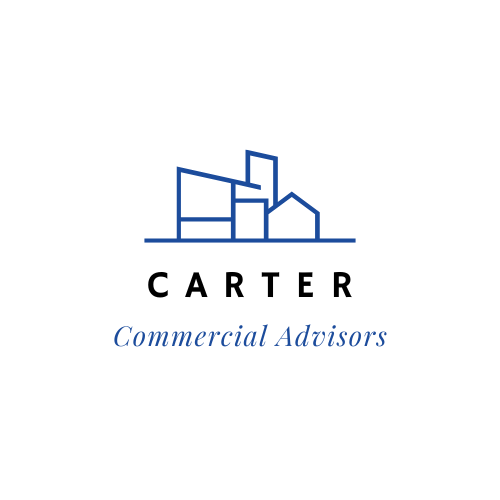For commercial real estate investors, navigating financing options goes beyond simply comparing loan interest rates. A crucial concept to understand is the Cost of Capital (CoC). While loan interest reflects the explicit cost of borrowing money, the CoC provides a more comprehensive view of the minimum return required to justify an investment.
In a Nutshell
Why Cost of Capital Matters
Unlike loan interest, which solely focuses on debt financing, the CoC considers all funding sources used to acquire a property. This includes:
- Debt: Represented by the interest rate on your mortgage loan.
- Equity: The return that investors expect for their ownership stake in the property, considering the inherent risk involved.
By incorporating both debt and equity costs, the CoC offers a more holistic perspective on the investment’s overall financial burden. This is vital for accurate property valuation, as it reflects the risk-adjusted return an investor expects.
Analogy: Beyond the Loan Payment
Imagine purchasing a commercial property as a rental investment. You’ll likely require a loan (debt) to finance a portion of the purchase. However, you’ll also invest your own capital (equity). The CoC would consider both the interest on the loan (debt cost) and the potential return you’re giving up by investing in this property instead of alternative options (equity cost). This combined picture helps determine if the property aligns with your investment goals and offers a financially sound return.
Making Informed Investment Decisions
Understanding the CoC empowers you to make informed investment decisions. By factoring in all financing costs, you can assess whether a property’s potential returns justify the minimum required return indicated by the CoC. This comprehensive analysis helps you avoid overlooking hidden costs and ensures you invest in properties with the potential to generate strong returns while managing risk effectively.
Calculating Cost of Capital
While the concept of Cost of Capital (CoC) is straightforward, calculating it involves considering several factors. Here’s a breakdown of the key components:
- Debt Cost: This is relatively easy to determine, as it’s simply the interest rate you pay on your mortgage loan. However, remember to factor in any additional loan fees or points associated with the financing.
- Equity Cost: Determining the equity cost can be slightly more complex. Here are two common methods:
- Capital Asset Pricing Model (CAPM): This approach uses the risk-free rate, the market return rate, and the property’s beta (a measure of its volatility compared to the overall market) to estimate the equity cost.
- Discounted Cash Flow (DCF) Analysis: This method involves estimating the future cash flows generated by the property and then discounting them back to their present value using a desired rate of return. This desired rate of return represents the equity cost.
Choosing the Right Method
The most suitable method for calculating your CoC depends on various factors, including the complexity of the property and the availability of reliable data. For simpler investment scenarios, the CAPM approach might suffice. However, for complex properties or those with unique risk profiles, a DCF analysis might offer a more accurate picture of the equity cost. Consulting with a financial advisor experienced in commercial real estate can help you determine the most appropriate method for your specific investment.
Beyond the Numbers: Qualitative Factors
While the CoC is a powerful quantitative tool, it’s important to consider qualitative factors as well when evaluating a commercial real estate investment. These factors can significantly impact the property’s risk profile and overall profitability:
- Market Conditions: The overall health and future outlook of the local market can significantly influence the property’s potential returns. A strong and growing market suggests lower risk and potentially higher returns, while a stagnant or declining market might indicate higher risk and lower returns.
- Property Management: The quality of property management directly affects the property’s ongoing operational costs and its ability to attract and retain tenants. Experienced and reliable property management can mitigate risk and potentially lead to higher returns.
- Tenant Quality: The creditworthiness and lease terms of your tenants significantly impact the property’s cash flow stability. Strong, creditworthy tenants with long-term leases minimize vacancy risk and ensure a steady stream of income.
The Takeaway: Informed Decisions for a Successful Investment Journey
By incorporating the CoC into your commercial real estate investment analysis, you gain a more comprehensive understanding of the minimum return required to justify the investment. This empowers you to make informed decisions that align with your risk tolerance and investment goals. Remember, the CoC is just one piece of the puzzle. Considering qualitative factors alongside the quantitative analysis provides a well-rounded perspective on the potential risks and rewards of a commercial property investment.
The Peril of Ignoring Cost of Capital: Risks and Missed Opportunities
While the benefits of understanding Cost of Capital (CoC) are clear, neglecting this crucial metric can expose you to significant financial risks and missed investment opportunities. Here’s why a CoC-centric approach is vital for savvy commercial real estate investors:
- Missed Opportunities in a 1031 Exchange: Many commercial real estate investors utilize 1031 exchanges, a tax-deferred swap that allows them to reinvest the proceeds from a property sale into a new property of equal or greater value within a specific timeframe. Failing to identify a suitable replacement property within the designated window due to a lack of CoC analysis can have significant tax consequences. Without a qualified investment option, investors may be forced to sell their original property and recognize capital gains taxes, eroding their overall return.
- Overlooking Hidden Costs: Solely focusing on loan interest rates can lead to overlooking hidden costs associated with debt financing. Points, origination fees, and prepayment penalties can all contribute to the overall cost of debt. Factoring these elements into your CoC calculation ensures a more accurate picture of the investment’s true financial burden.
- Underestimating Risk: A low loan interest rate might seem appealing on the surface. However, a low interest rate could be offered to compensate for a higher-risk property. By not considering the equity cost (which reflects risk), you might underestimate the minimum return required to justify the investment. This could lead to a situation where the property’s actual returns fall short of your expectations, resulting in financial losses.
- Failing to Adapt to Market Shifts: The cost of capital is not static. Market interest rates, investor risk tolerance, and property valuations can all fluctuate. Regularly recalculating your CoC allows you to adapt your investment strategy to changing market dynamics. This ensures you continue to pursue opportunities that meet your minimum required return threshold, even as market conditions evolve.
The Hidden Cost of Inaction
Beyond the financial risks outlined above, there’s another critical factor to consider: the cost of inaction. While focusing on the costs associated with making a purchase might seem prudent, neglecting the potential tax implications of not investing can be equally detrimental.
Here’s a specific example:
- 1031 Exchange Scenario: Imagine you’ve sold a commercial property and are eligible for a 1031 exchange. If you fail to identify a suitable replacement property within the required timeframe due to a hesitancy to move forward without a thorough CoC analysis, you might be forced to pay capital gains taxes on the sale. This unexpected tax burden can significantly erode your overall investment returns.
A Balanced Approach
A CoC-centric approach empowers you to make informed decisions that consider both the potential rewards and the associated risks of a commercial real estate investment. By carefully evaluating the CoC alongside the potential cost of inaction, particularly in scenarios like 1031 exchanges, you can strike a balance between calculated risk-taking and responsible investment strategy.




 Are You Accepting New Customers?
Are You Accepting New Customers?
